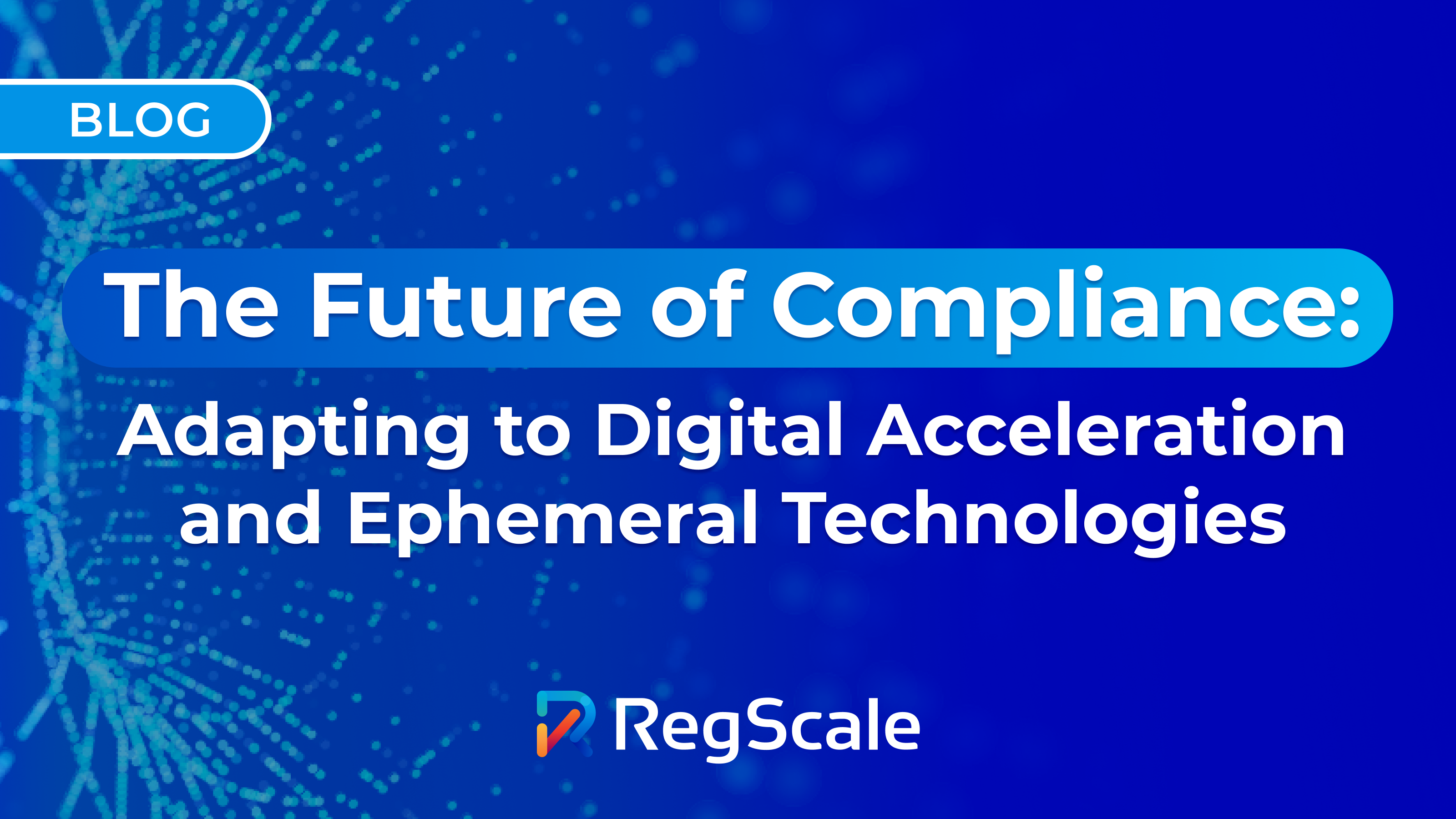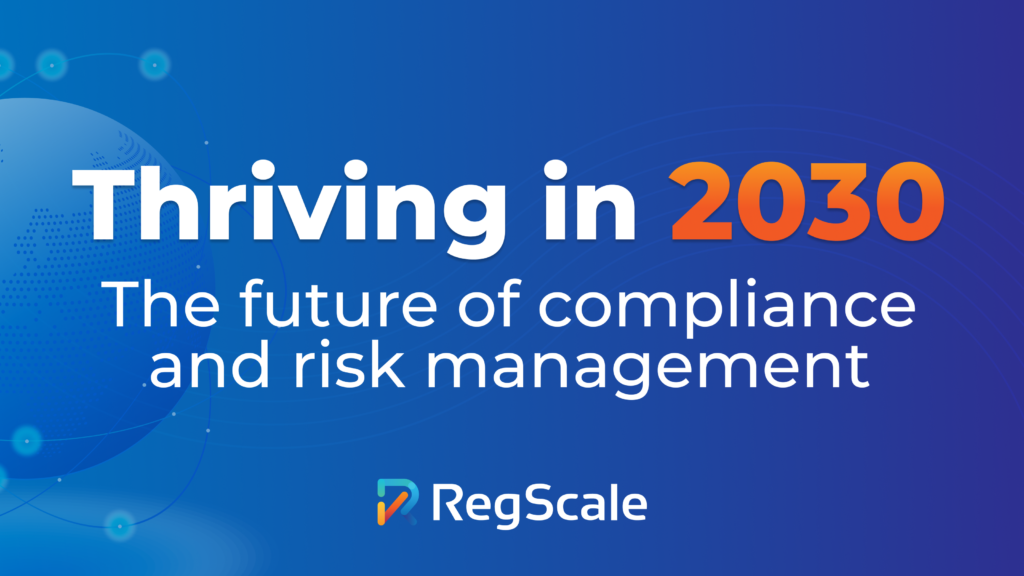The Future of Compliance: Adapting to Digital Acceleration and Ephemeral Technologies

As we move towards 2030, the landscape of governance, risk, and compliance (GRC) is undergoing a seismic shift. With the rapid digital acceleration, the pervasive adoption of cloud technologies, and the rise of ephemeral tech, organizations are faced with unprecedented challenges… but also major opportunities.
To thrive in this evolving environment, businesses are starting to embrace Continuous Controls Monitoring (CCM) and innovative GRC solutions that can keep pace with the dynamic nature of modern IT infrastructure. What’s been causing the rapid changes in compliance and risk management you ask? Read this blog to find out more.
The shift to cloud and ephemeral technologies
The traditional IT infrastructure, characterized by static, client-server setups protected by firewalls, is becoming obsolete. Today, workloads are increasingly ephemeral, hosted on serverless systems that scale up and down based on demand. This transformation is driven by the shift to cloud-native environments, where data systems are not only more dispersed, but also more transient.
However, the compliance processes that many organizations rely on have not kept up with this evolution. Traditional methods involving documents, spreadsheets, and legacy GRC tools lack the agility required for today’s fast-paced environment. This outdated approach results in inefficiencies and significant compliance gaps.
Embracing Continuous Controls Monitoring (CCM)
To address these challenges, organizations are turning to cloud-based GRC solutions and CCM. CCM enables real-time visibility and continuous assessment of internal controls across an organization’s processes, systems, and data. By leveraging automation and data analytics, CCM ensures compliance with regulatory requirements, mitigates risks, and maintains operational effectiveness.
Key benefits of CCM:
- Real-time monitoring: CCM provides continuous oversight of compliance status, allowing organizations to detect and address issues promptly. This capability significantly reduces the time to identify and mitigate risks, helping maintain compliance without interruption. It also enables the creation of data lakes that can be managed using CCM, providing near real-time visibility of security, risk, and compliance with those controls.
- Automation and efficiency: CCM reduces the manual effort required for compliance tasks, freeing up resources for more strategic activities. Data from our latest white paper “GRC in 2030: A CISO Survival Guide” noted that companies implementing CCM have reported a 60% reduction in audit preparation time, translating to substantial cost savings and improved resource allocation.
- Enhanced accuracy: CCM utilizes data-driven insights to improve the precision of compliance processes, reducing the risk of errors. Organizations using CCM have seen a 40% increase in the accuracy of their compliance reports, ensuring a more reliable and robust compliance posture. This precision builds trust with stakeholders and regulatory bodies.
AI can change how we manage compliance programs
Artificial intelligence (AI) is playing an increasingly critical role in transforming compliance processes. AI-powered solutions like RegScale’s platform can automate up to 80% of manual compliance tasks, supercharge teams to focus on what truly matters, and significantly speed up processes as well as reduce costs. By automating routine tasks and leveraging predictive analytics, AI enables organizations to focus on strategic decision-making and proactive risk management.
How AI enhances compliance:
- Automated audits: AI can conduct continuous audits, ensuring compliance documentation is always up to date. This reduces the time and effort required for periodic manual audits, allowing for more frequent and thorough compliance checks. According to the white paper, implementing automated audits through AI not only saves time but also provides a comprehensive and real-time assessment of compliance status, significantly reducing audit fatigue and enhancing overall efficiency
- Predictive analytics: AI identifies potential compliance issues before they become problems, allowing for proactive mitigation. This capability helps organizations anticipate and address risks, maintaining a stronger compliance posture. Predictive analytics streamline the detection of compliance gaps, offering early warnings and enabling timely corrective actions to mitigate risks effectively, thereby improving overall compliance reliability.
- Data integration: AI seamlessly integrates with various data sources, providing a comprehensive view of compliance status. This integration ensures that all relevant data is considered in compliance activities, enhancing the accuracy and completeness of compliance reports. By creating a unified compliance framework, AI-driven data integration enables organizations to manage compliance more effectively, ensuring consistency and reducing the likelihood of errors across different systems.
Transforming compliance for the next decade and beyond
As we look towards 2030, the need for innovative compliance solutions will only grow. Organizations must prepare for an era where digital acceleration, cloud technologies, and ephemeral tech are the norms. Embracing continuous controls monitoring and AI-driven compliance strategies will be crucial for navigating this complex landscape.
The future of compliance lies in the ability to adapt to rapid technological changes. By adopting cloud-based GRC solutions and leveraging the power of AI, organizations can transform their compliance processes, ensuring they remain agile and resilient in the face of evolving challenges.
For a deeper understanding of how you can future-proof your compliance processes, check out “GRC in 2030: A CISO Survival Guide” to learn more about digital acceleration and the role of emerging technologies.
Ready to get started?
Choose the path that is right for you!
Skip the line
My organization doesn’t have GRC tools yet and I am ready to start automating my compliance with continuous monitoring pipelines now.
Supercharge
My organization already has legacy compliance software, but I want to automate many of the manual processes that feed it.
